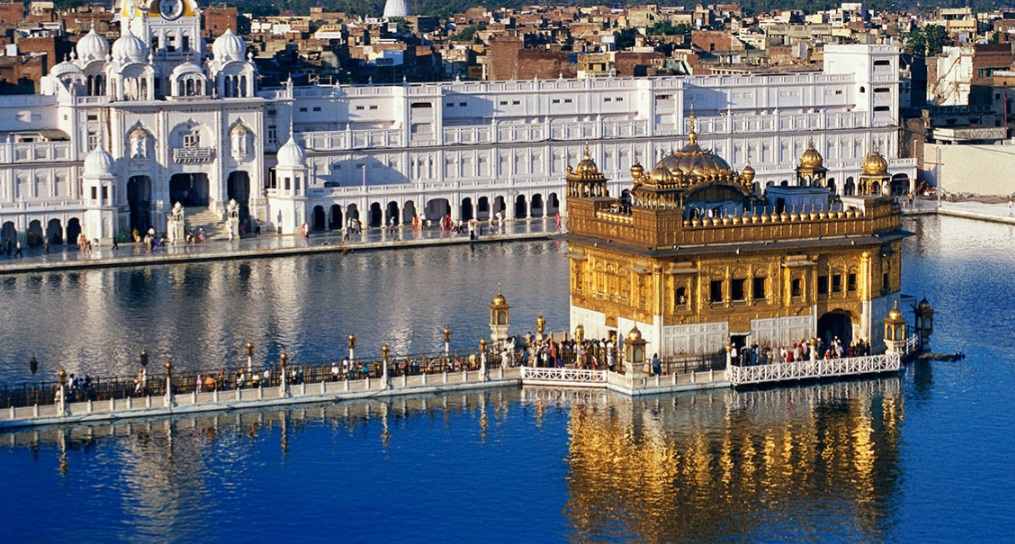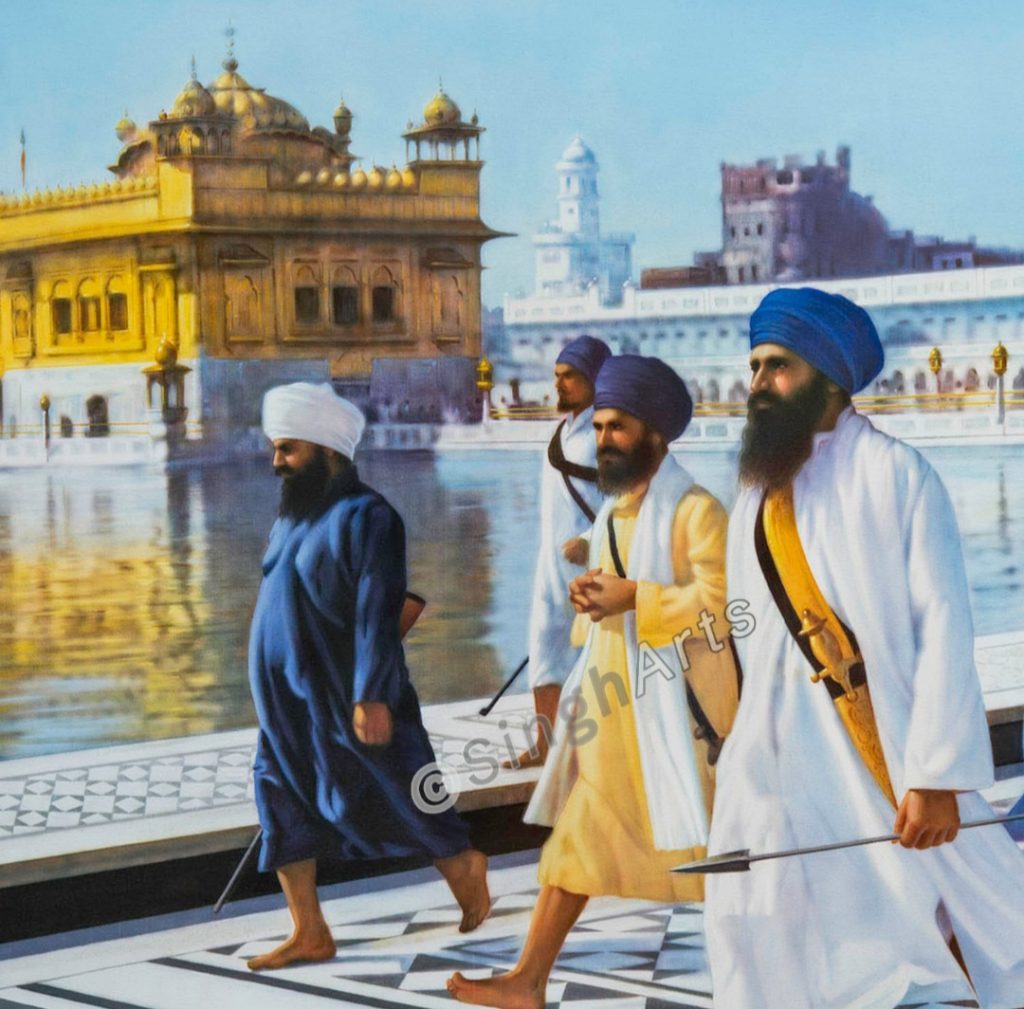On 3rd June 1984, India witnessed the beginning of one of the most controversial military operations in its post-independence history — Operation Blue Star. This event didn’t just impact the immediate political landscape; it left behind a trail of long-lasting consequences that continue to echo through India’s social and political discourse even today.

But what exactly happened during Operation Blue Star? Why was it carried out? What were its outcomes, and how did it change India?
Let’s break it down in a way that’s clear, honest, and deeply informative.
To understand Operation Blue Star, we must go back to the late 1970s and early 1980s in Punjab, India’s northern state that holds a unique identity with its majority Sikh population. At the center of the rising unrest was a charismatic yet controversial figure — Jarnail Singh Bhindranwale.

Bhindranwale, originally a religious preacher, began gaining influence among Sikh youth by addressing issues of drug abuse, corruption, and cultural erosion in Punjab. Over time, however, his tone turned more militant. He advocated for the autonomy of Punjab, and some of his followers began calling for Khalistan — a separate Sikh nation.
Although the idea of Khalistan wasn’t new, Bhindranwale’s rhetoric and growing control over religious institutions, particularly the Akal Takht inside the Golden Temple complex in Amritsar, elevated tensions to a new level.
By early 1984, Bhindranwale and heavily armed militants had fortified the Golden Temple complex, turning it into a base of operations. Intelligence reports suggested that weapons and explosives were being stockpiled inside the temple premises. The Indian government, led by Prime Minister Indira Gandhi, was deeply concerned.
Negotiations were attempted. However, repeated efforts to reach a peaceful resolution failed. The situation became politically sensitive and dangerously unstable. Public security was at risk, and communal harmony was deteriorating.
On 3rd June 1984, the Indian Army launched Operation Blue Star, a full-scale military mission aimed at flushing out militants from the sacred complex.
The operation began on June 3rd and continued until June 6th, 1984. It wasn’t just a simple police action — it was a high-intensity military assault conducted by elite units like the Para Commandos, Sikh Regiment, and Grenadiers.
- Timing: The operation was carried out during Guru Arjan Dev Ji’s martyrdom day, when thousands of pilgrims had gathered at the Golden Temple, making the risk of civilian casualties extremely high.
- Weaponry and Resistance: Militants, heavily armed and entrenched, offered fierce resistance. The Indian Army used tanks and heavy artillery to breach fortified positions, including the historic Akal Takht — a move that deeply hurt Sikh sentiments worldwide.
- Casualties: Official government estimates stated that around 400 people died. However, independent sources and Sikh organizations claim the toll was much higher, with over 1,000 civilians and militants losing their lives.
- Damage: Besides the tragic loss of life, the Akal Takht was heavily damaged, and bullet holes scarred the sacred Golden Temple. For many Sikhs, it felt like an attack on their faith itself.
Aftermath: A Nation in Shock and Anger
1. Indira Gandhi’s Assassination
Just five months later, on October 31, 1984, Prime Minister Indira Gandhi was assassinated by her own Sikh bodyguards in retaliation for the operation. This led to a horrific wave of anti-Sikh riots, particularly in Delhi, where thousands of innocent Sikhs were brutally murdered.
2. Deepening Sikh Alienation
Many in the Sikh community felt betrayed, humiliated, and targeted. Places of worship had been violated, and community members killed. This event deepened the divide between the Indian state and large sections of the Sikh population, both in India and abroad.
Rather than ending militancy, Operation Blue Star fueled a decade-long insurgency in Punjab. Thousands died in the violence that followed, including civilians, militants, and security forces.
Operation Blue Star remains a deeply divisive chapter in India’s history. While the Indian government argued it was a military necessity, critics — including human rights activists and political observers — questioned:
- Could more patient diplomacy have worked?
- Was the timing of the operation insensitive to religious sentiment?
- Was the level of force excessive in a sacred place?
Many military experts acknowledge that urban combat inside a religious complex is among the most difficult scenarios imaginable. Yet, the political fallout suggests that the costs were staggering, both emotionally and socially.
Today, decades later, Operation Blue Star is not just an event — it’s a memory etched in trauma, politics, and the struggle for justice.
Some key lessons include:
- Religious sensitivities matter in a diverse country like India. Respect, dialogue, and mutual understanding must always be prioritized.
- Extremism grows in the vacuum of trust and development. What started as a call for cultural pride turned into a movement of armed defiance.
- Transparency and accountability, especially in state-led operations, are vital to healing and national unity.
In recent years, successive Indian governments have acknowledged the pain caused by these events and have tried to offer some reconciliation. But wounds of faith take generations to heal.
June 3, 1984, was more than just the start of a military mission. It was a moment that reshaped the course of Indian history — politically, socially, and emotionally.
Operation Blue Star teaches us that force can never be a substitute for understanding, and that real peace can only be built on justice, inclusiveness, and compassion.
By remembering and reflecting on these events, we ensure that such painful chapters are never repeated, and that our collective future is guided by wisdom, not vengeance.
Have thoughts or reflections about Operation Blue Star?
Share them in the comments below. Let’s build a conversation around awareness, peace, and healing.
This article is written with utmost respect for all communities involved, aiming to foster understanding rather than division.
हिन्द अनुवाद :-
3 जून 1984: ऑपरेशन ब्लू स्टार – भारतीय इतिहास का एक निर्णायक मोड़
3 जून 1984 को भारत ने अपने स्वतंत्रता के बाद के इतिहास की एक अत्यंत विवादास्पद और भावनात्मक सैन्य कार्रवाई देखी — ऑपरेशन ब्लू स्टार। यह घटना केवल तत्काल राजनीतिक परिदृश्य को ही नहीं, बल्कि भारत के सामाजिक और सांस्कृतिक ताने-बाने को भी दीर्घकालीन रूप से प्रभावित कर गई।
लेकिन यह ऑपरेशन आखिर क्यों किया गया? इसके पीछे की वजहें क्या थीं? इसके परिणाम क्या हुए और इसने भारत को किस तरह से बदल दिया?
आइए इसे स्पष्ट, ईमानदार और तथ्यपरक रूप में समझते हैं।
पृष्ठभूमि: तनाव की जड़ें
ऑपरेशन ब्लू स्टार को समझने के लिए हमें 1970 के दशक के अंत और 1980 के आरंभ के पंजाब की ओर लौटना होगा। यहां एक करिश्माई लेकिन विवादास्पद धार्मिक नेता जनरैल सिंह भिंडरांवाले धीरे-धीरे लोगों के बीच लोकप्रिय हो रहे थे।
भिंडरांवाले ने नशाखोरी, भ्रष्टाचार और संस्कृति के पतन के विरुद्ध प्रचार कर युवाओं को आकर्षित किया। लेकिन समय के साथ उनका रुख उग्र होता गया और वे पंजाब की स्वायत्तता तथा कुछ समर्थकों द्वारा खालिस्तान नामक अलग सिख राष्ट्र की मांग करने लगे।
हालाँकि खालिस्तान की अवधारणा नई नहीं थी, लेकिन भिंडरांवाले द्वारा स्वर्ण मंदिर परिसर और विशेषकर अकाल तख्त पर नियंत्रण ने हालात को और अधिक जटिल बना दिया।
1984 की शुरुआत तक भिंडरांवाले और उनके समर्थकों ने स्वर्ण मंदिर परिसर को किले में बदल दिया था। खुफिया एजेंसियों के अनुसार वहाँ हथियारों का जखीरा जमा हो रहा था।
सरकार, विशेषकर प्रधानमंत्री इंदिरा गांधी, स्थिति को लेकर चिंतित थीं। कई बार बातचीत की कोशिशें हुईं लेकिन कोई हल नहीं निकला।
अंततः 3 जून 1984 को सेना द्वारा ऑपरेशन ब्लू स्टार शुरू किया गया, जिसका उद्देश्य मंदिर परिसर से उग्रवादियों को बाहर निकालना था।
ऑपरेशन: एक रक्तरंजित टकराव
ऑपरेशन 3 से 6 जून 1984 तक चला। इसमें पैरा कमांडोज़, सिख रेजिमेंट, और ग्रेनेडियर्स जैसे विशेष बलों को लगाया गया।
- समय: यह कार्रवाई गुरु अर्जुन देव जी की शहादत दिवस पर हुई, जब हज़ारों श्रद्धालु मंदिर में उपस्थित थे।
- हथियारबंदी: उग्रवादियों के पास अत्याधुनिक हथियार थे और उन्होंने
किया। सेना को टैंकों और तोपों का उपयोग करना पड़ा, जिससे अकाल तख्त को भारी क्षति पहुंची। - हताहत: सरकारी आंकड़ों के अनुसार लगभग 400 लोगों की मृत्यु हुई, लेकिन स्वतंत्र सूत्रों के अनुसार यह संख्या 1000 से अधिक हो सकती है।
- धार्मिक क्षति: स्वर्ण मंदिर परिसर गोलियों से छलनी हो गया और सिख भावनाओं को गहरा आघात पहुँचा।
परिणाम: एक देश सदमे और गुस्से में
1. इंदिरा गांधी की हत्या
31 अक्टूबर 1984 को प्रधानमंत्री इंदिरा गांधी की उनके ही सिख अंगरक्षकों द्वारा हत्या कर दी गई। इसके बाद दिल्ली और अन्य शहरों में सिख विरोधी दंगे भड़क उठे, जिनमें हज़ारों निर्दोष सिखों की निर्मम हत्या की गई।
2. सिख समुदाय में गहरा असंतोष
सिख समुदाय ने इसे धार्मिक विश्वास और आत्मसम्मान पर हमला माना। इससे राज्य और सिखों के बीच विश्वास की गहरी खाई बन गई।
3. उग्रवाद का विस्तार
ऑपरेशन ब्लू स्टार के बाद पंजाब में उग्रवाद और आतंक का दशक शुरू हुआ। आम नागरिक, सुरक्षाबल, और उग्रवादी — सभी इस संघर्ष का शिकार बने।
मानवीय, राजनीतिक और नैतिक प्रश्न
सरकार ने इसे सुरक्षा की मजबूरी बताया, लेकिन बहुत से मानवाधिकार कार्यकर्ताओं और इतिहासकारों ने सवाल उठाए:
- क्या और अधिक बातचीत की कोशिश की जा सकती थी?
- क्या धार्मिक पर्व के दिन यह कार्रवाई करना उचित था?
- क्या अत्यधिक सैन्य बल का प्रयोग आवश्यक था?
सेना द्वारा धार्मिक स्थल के भीतर शहरी युद्ध जैसे कठिन कार्य को अंजाम देना आसान नहीं था, लेकिन राजनीतिक और सामाजिक परिणाम अत्यंत गहरे और दूरगामी रहे।
सबक: इतिहास हमें क्या सिखाता है?
दशकों बाद भी ऑपरेशन ब्लू स्टार केवल एक घटना नहीं, बल्कि एक स्मृति, पीड़ा और चेतावनी बन चुका है।
महत्वपूर्ण सबक:
- धार्मिक भावनाओं का सम्मान एक बहु-सांस्कृतिक देश के लिए अत्यंत आवश्यक है।
- अलगाव की भावना तभी जन्म लेती है जब विश्वास और संवाद की कमी हो।
- सरकारी पारदर्शिता और जवाबदेही ही दीर्घकालिक शांति की कुंजी है।
हाल के वर्षों में सरकारों ने घटनाओं की पीड़ा को स्वीकार किया है, लेकिन धार्मिक घावों को भरने में पीढ़ियाँ लगती हैं।
निष्कर्ष: यह तारीख हमें क्यों याद रखनी चाहिए?
3 जून 1984 केवल एक सैन्य कार्रवाई की शुरुआत नहीं थी, बल्कि यह भारत के सामाजिक और राजनीतिक नक्शे को बदलने वाला दिन था।
ऑपरेशन ब्लू स्टार हमें सिखाता है कि बल कभी भी समझदारी का विकल्प नहीं हो सकता। शांति केवल न्याय और संवाद से ही संभव है।
यदि हम इन घटनाओं को याद रखें और उनसे सीखें, तो हम भविष्य में ऐसे दुखद अध्यायों को दोहराने से बच सकते हैं।
क्या आपके पास ऑपरेशन ब्लू स्टार को लेकर अपने विचार या अनुभव हैं?
नीचे कमेंट करें और इस बातचीत को ज्ञान, शांति और healing की ओर ले चलें।
यह लेख पूर्ण सम्मान के साथ लिखा गया है, जिसका उद्देश्य किसी समुदाय को आहत करना नहीं, बल्कि इतिहास को समझना और साझा करना है।